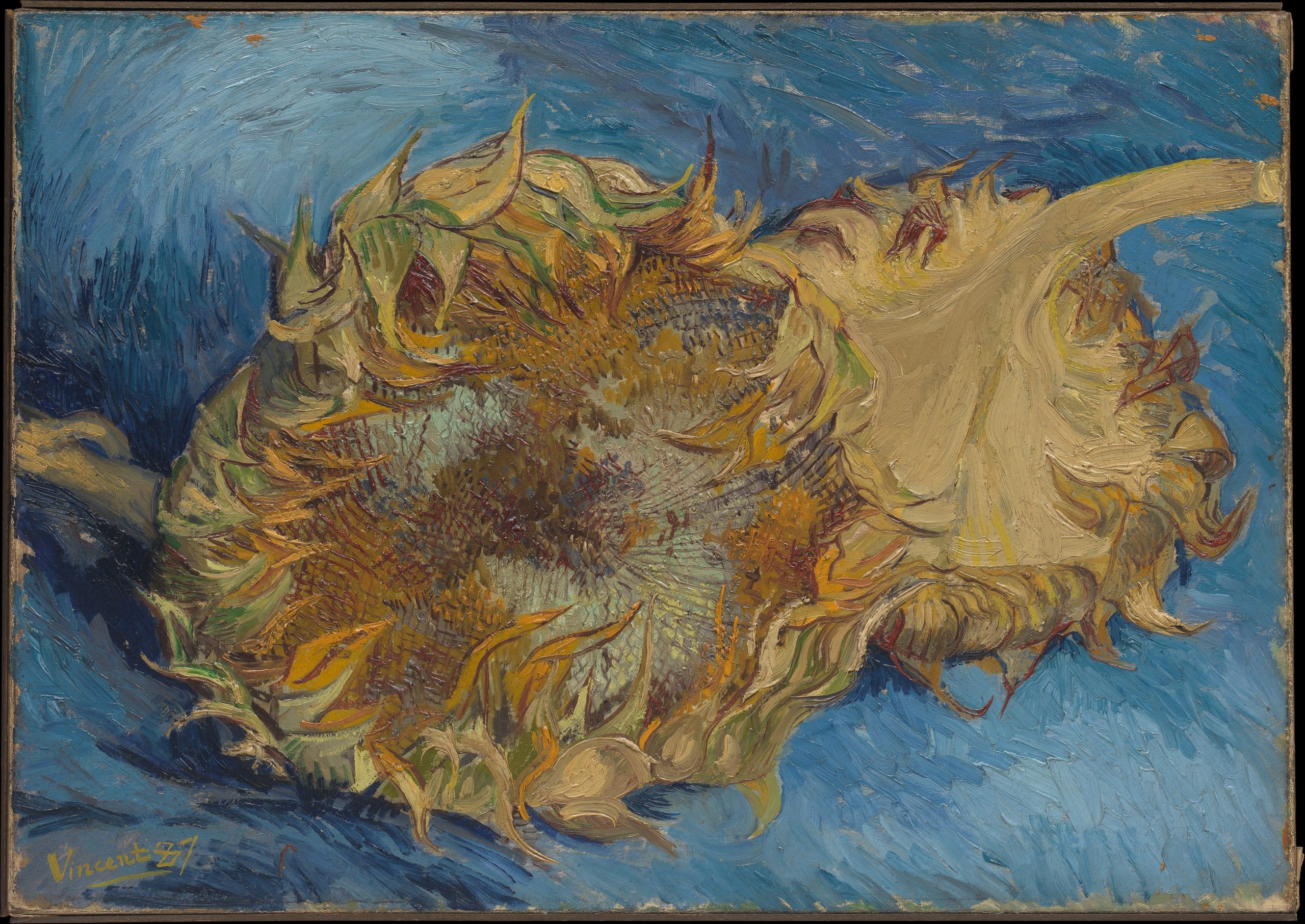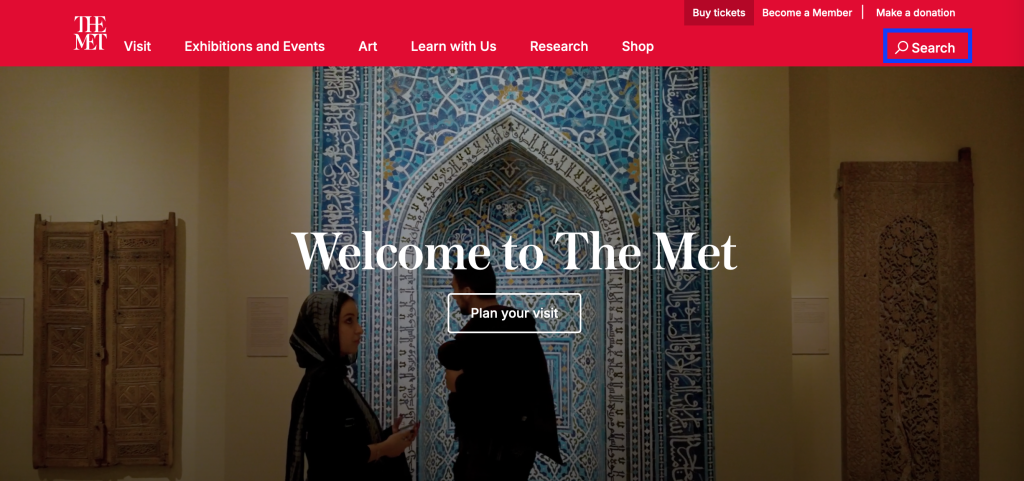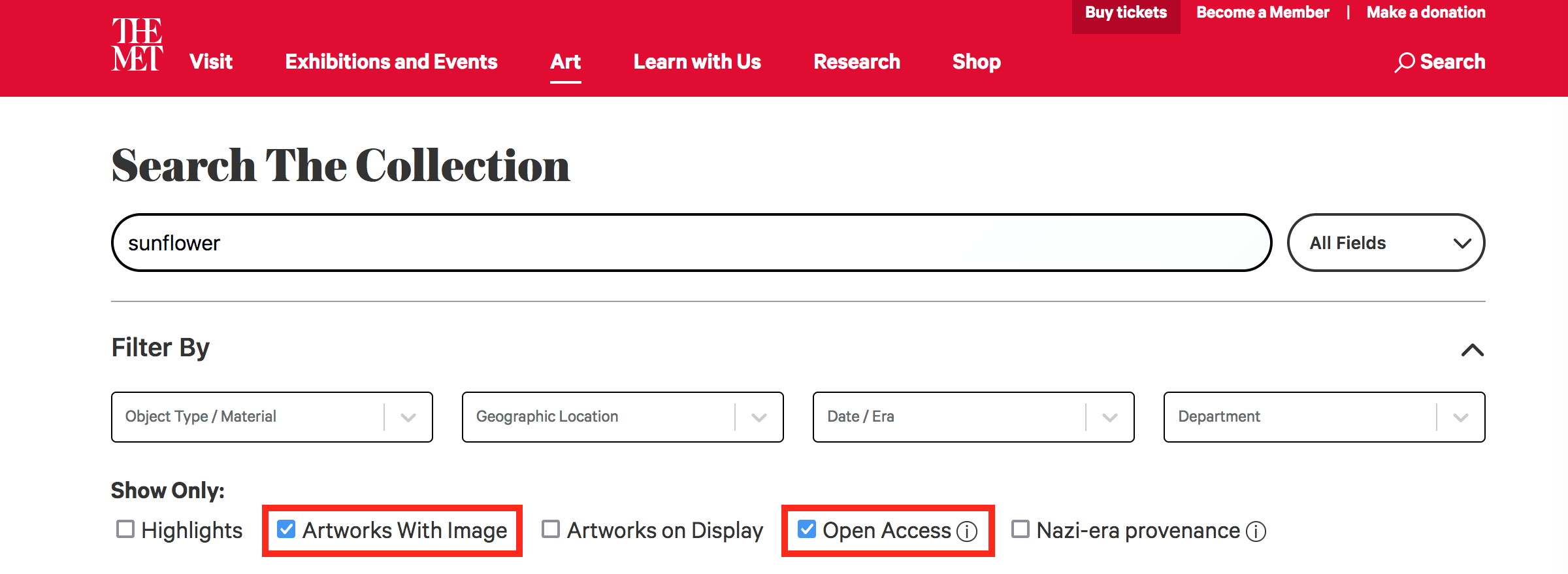Finding Images from the Met
Learning Objective
Museums and other cultural institutions like the Metropolitan Museum of Art in New York City display digital images of works in their collections on their websites. In many cases—but not all!—these images are free to use.
The tens of thousands of objects on view at the Met itself represent only a portion of the museum’s entire collection. A greater part of the collection can be viewed digitally on the museum’s website. These digital images represent many artworks in the public domain, such as this oil painting of sunflowers by Vincent Van Gogh.

How can you find images of works in the public domain at the Met’s website?
How to Find Images of Works in the Public Domain at the Met’s Website
Go to the main page of the site: https://www.metmuseum.org/. Click on Search at the top right of the page, and the search bar appears.

Type your keyword or keywords in the search bar, hit Enter or Return, and a number of filters appear. For example, you can filter the results by material (e.g., paintings, ceramics, textiles), geographic location, or era. To find images that you can use, check the boxes next to Artworks With Image and Open Access.[1]

After the Open Access filter is applied, the images on the results page all should be free to use. These images are covered by the museum’s Open Access Policy.
What’s the Deal with the Open Access Policy?
The Public Domain Review explains, “Rights and licenses applying to public domain works can […] be divided into two broad categories:
- “The rights status of the underlying work, by which is meant the actual original work itself (the words of a book, the actual physical painting or drawing, a musical score, etc).
- “The rights status of the digital copy, by which is meant the digital reproduction of this original work (the scan, photograph, digitisation etc., i.e. the medium by which the underlying work makes its way onto screens and the internet).”
Some institutions claim copyright over the digital images of works in their collection, regardless of whether or not the works are in the public domain. According to The Public Domain Review, such claims are “highly questionable.” The position of the Wikimedia Foundation is more assertive: that “faithful reproductions of two-dimensional public domain works of art are public domain.” However, keep in mind that these views are not universally accepted. If you want to use the digital image of a work in the public domain provided by a cultural institution, be sure to check out the policy at that particular institution. Many have policies like the Met’s Open Access Policy, which makes it clear that the digital images are free to use—but many institutions do not.
See Rights Labeling on Our Site by The Public Domain Review for a thorough discussion of this topic.
- You might wonder what the “Nazi-era provenance” filter option is all about. These works are related to the museum’s “Provenance Research Project, the purpose of which is to determine whether any works of art in the Museum's collection could have been unlawfully appropriated in the Nazi era and not subsequently restituted to their rightful owners.” ↵
